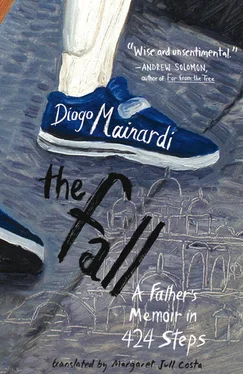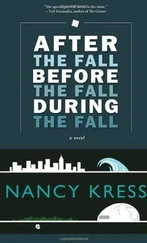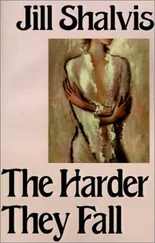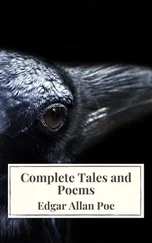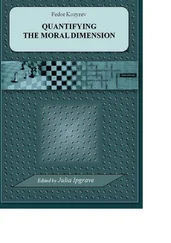Diogo Mainardi
The Fall: A Father's Memoir in 424 Steps
THE FALL: A FATHER'S MEMOIR IN 424 STEPS
1
Tito has cerebral palsy.
2
I blame Tito’s cerebral palsy on Pietro Lombardo.
In 1489, Pietro Lombardo designed the Scuola Grande di San Marco. And it was the Scuola Grande di San Marco designed by Pietro Lombardo that brought about Tito’s cerebral palsy.
3
On 30 September 2000, my wife and I set off for Venice Hospital in Campo Santi Giovanni e Paolo. Our son would be born that day. My wife’s name: Anna. Our son’s name: yes, that’s right, Tito.
When we reached Campo Santi Giovanni e Paolo, next to the statue of Bartolomeo Colleoni, Anna said: “I’m really worried about the birth.”
She had expressed the same fear in previous weeks, because Venice Hospital, now looming before us, was known for its medical errors.
I studied its façade for a moment.
Venice Hospital moved into the Scuola Grande di San Marco in 1808. The façade, designed by Pietro Lombardo in 1489, became the hospital’s main entrance.
I said: “With a façade like that, I could even accept having a deformed child.”
4
Venice Hospital made a mistake during Tito’s birth. That mistake brought about his cerebral palsy.
5
Ezra Pound, ABC of Reading:
A few bits of ornament applied by Pietro Lombardo … are worth far more than all the sculpture and “sculptural creation” produced in Italy between 1600 and 1950 .
I went further than Ezra Pound. What I said to my wife, as I contemplated the façade of the Scuola Grande di San Marco, can only be interpreted thus: “Pietro Lombardo is worth far more than my son’s cerebral palsy.”
6

(Picture Credit 1.1)
7
In the previous image: Campo Santi Giovanni e Paolo .
The painting is by Antonio Canal — or Canaletto. It dates from 1725.
Anna and I, clinging to each other like Siamese twins, are standing by the statue of Bartolomeo Colleoni, on our way to the Scuola Grande di San Marco, the entrance to Venice Hospital, where Tito will be born.
8
How did I end up in a painting by Canaletto?
I was always there. And always will be there. The Canaletto painting is my personal nativity. It captures the moment when my destiny was revealed. Ever since Tito’s birth, on 30 September 2000, I have become a miniature man, without face or identity, just as I am in Canaletto’s painting. What marks me out is fatherhood. I am merely a man eternally accompanying his wife to the birth of their son.
I am Tito’s father. I exist only because Tito exists.
9
As well as praising Pietro Lombardo in ABC of Reading , Ezra Pound also praised him in The Cantos .
In particular, in Canto XLV, entitled “With Usura .”
Lines 27–28:
… Pietro Lombardo
Came not by usura …
10
Usury, according to Ezra Pound, was a “sin against nature.” It had the power to corrupt humanity, preventing art from flourishing.
In Canto XLV, Pietro Lombardo symbolizes the idea of artistic beauty. Evil, represented by usury, is incapable of creating Good, represented by the architecture of Pietro Lombardo.
Looking at the Scuola Grande di San Marco before Tito’s birth, I was in the grip of the same stupid aestheticism as Ezra Pound.
Venice Hospital was known for its medical mistakes. Instead of going to a safer hospital, in Mestre or in Padua, I merely made a joke about the possibility of having a deformed child.
I could only associate the perfect art of Pietro Lombardo with an equally perfect birth. Because Good, represented by the architecture of Pietro Lombardo, would be incapable of creating Evil, represented by a bungled birth.
11
Ezra Pound, Canto XLV, line 42:
Usura slayeth the child in the womb
The person who nearly slew Tito in the womb by asphyxiation was the hero of those lines by Ezra Pound, Pietro Lombardo.
12
From Ezra Pound to Xbox.
The hero of the game Assassin’s Creed II , Desmond Miles, goes back in time and takes on the identity of an Italian nobleman from the late fifteenth century, Ezio Auditore da Firenze, who scours Venice in order to eliminate the murderers who asphyxiated his father. One of the places he has to pass is the Scuola Grande di San Marco.
I am the Desmond Miles of cerebral palsy. I return to the Venice of the late fifteenth century and, like Ezio Auditore da Firenze, I scour the Scuola Grande di San Marco in search of clues that will lead me to the murderers who asphyxiated Tito.
13

(Picture Credit 1.2)
14
In the previous image: Ezio Auditore da Firenze outside the Scuola Grande di San Marco, poised and ready to destroy his enemies.
The clues that allow you to continue the game (press button Y to get Eagle Vision) can be found behind the upper arch.
15
John Ruskin, The Stones of Venice:
The two most refined buildings in this style in Venice are, the small Church of the Miracoli, and the Scuola di San Marco .
The Scuola Grande di San Marco — as I have said — was designed by Pietro Lombardo. The Church of the Miracoli — I say now — was also designed by him.
If I blame Pietro Lombardo for Tito’s cerebral palsy, I should lay equal blame at the door of John Ruskin, who handed me all the necessary clues for interpreting the architecture of Pietro Lombardo. Standing contemplating the Scuola Grande di San Marco, just moments before entering the hospital in Venice, I could see only what John Ruskin had seen before me.
16
What John Ruskin, with his Eagle Vision, saw before I ever did:
The method of inlaying marble, and the general forms of shaft and arch, were adopted from the buildings of the twelfth century .
The Scuola Grande di San Marco, which harked back nostalgically to the twelfth century, fitted in with what John Ruskin, in The Stones of Venice , called the Byzantine Renaissance.
For John Ruskin, as for me, the best thing about Pietro Lombardo was precisely that regressive tendency. For John Ruskin, as for me, the best thing about Pietro Lombardo was his contrarian reactionaryism.
17
In 1853, John Ruskin published the third and final volume of The Stones of Venice , entitled The Fall .
The architecture of a place, according to him, had the power to shape the destiny of its inhabitants. The Byzantine architecture of the twelfth century and the Gothic Byzantine architecture of the thirteenth, fourteenth and fifteenth centuries had determined the intellectual and moral superiority of the Venetians, ensuring their commercial and military hegemony. On the other hand, Renaissance architecture, which drove out Gothic Byzantine architecture from the sixteenth century onward, represented an age corrupted by the sense of pride. The same sense of pride that, again according to John Ruskin, finally ruined the city, relegating it to a long period of decline.
Yes: The Fall .
John Ruskin pointed out the most harmful elements — or the “immoral elements” that went against the “law of the Spirit” — apparent in the architecture of the Renaissance: Pride of Science, Pride of State and Pride of System.
Читать дальше
